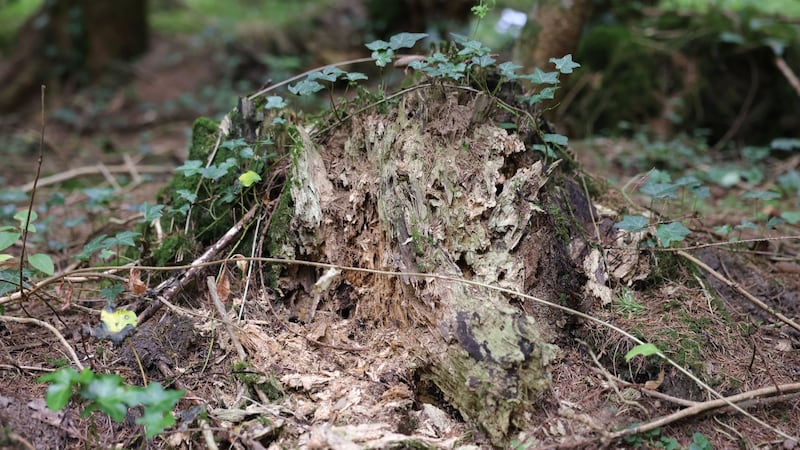An experiment at 55 locations worldwide, including Ireland, has measured the vast amount of carbon released from deadwood in forests and quantified how much decomposition is caused by insects for the first time.
In Ireland the experiment was conducted by zoologists from University College Cork – including college president Prof John O'Halloran – in Glengarriff Nature Reserve, Co Cork. The findings have immense implications for overall carbon calculations globally.
“A comprehensive understanding of the forest carbon cycle and its climate sensitivity is critical for improving global climate change projections,” the researchers conclude.
The international team determined the annual contribution made by deadwood and quantified the importance of insects in its decomposition in the global carbon cycle. Some 10.9 gigatons of carbon are released from deadwood worldwide annually – equivalent to roughly 115 per cent of emissions from fossil fuels.
Their findings will need to be factored into “carbon budgeting”; calculations about how much CO2 is being generated and needs to be curbed globally, taking into account how much is generated by human activities and how much is generated by nature. This, in turn, will inform emission predictions and reduction strategies.
While living trees absorb a considerable amount of CO2 from the atmosphere and therefore play an important role in the protection of our climate, little was known about the role of dead and rotting trees in the global carbon cycle, Prof O’Halloran explained.

Decomposition of wood and the associated recycling of the nutrients are among the most important processes to take place in forests.
Just how much carbon is released from rotting wood worldwide and what role insects play in this process needed to be quantified, he said. The research was led by the Bavarian Forest National Park and co-ordinated by scientists at the University of Würzburg and the Technical University of Munich in Germany.
Findings published in Nature
The findings were published by the journal Nature on Wednesday.
At forest locations on six continents, researchers laid out wood from more than 140 tree species to assess the influence of climate on decomposition rate.
Fifty research groups collaborated on the three-year experiment, sometimes under exceptionally difficult conditions. It was necessary to use elaborate measures to protect some areas from elephants. One area was lost to a forest fire and replanted, while another area was flooded.
The field research in Glengarriff was undertaken by Allen Whittaker, Ilse Corkery and Anthony Caravaggi of UCC School of Biological, Earth and Environmental Sciences.
Rate of decomposition and contribution of insects are highly dependent on local climate and increase as the temperature rises. Higher levels of precipitation accelerate decomposition in warmer regions and slow it down in regions where the temperatures are lower. “Ongoing climate warming will likely accelerate decomposition by enhancing the activity of microorganisms and insects,” they warn.
Climate challenges
Prof O’Halloran said the research was important for addressing future climate-change challenges and meeting targets. If the figures were unknown “climate modelling” would not be as accurate as it needs to be.

It was not a case of eliminating insects to stop the release of carbon, but underlined the need for maintaining a carefully balanced carbon cycle in forests – as well as maximising the presence of trees as living species because of their ability to capture carbon.
He added: “We know that temperature, moisture and, indeed, insect composition bacteria and fungi are critical for decomposition. What we didn’t know was the extent of the role played by insects in that process. This is really important because it’s only with a detailed understanding of the processes by which carbon is released that we can model the future challenges in relation to carbon budgeting.
“The role that insects play is amazing. We found that 29 per cent of the carbon that’s released from forests is actually released through insect decomposition,” said Prof O’Halloran.













